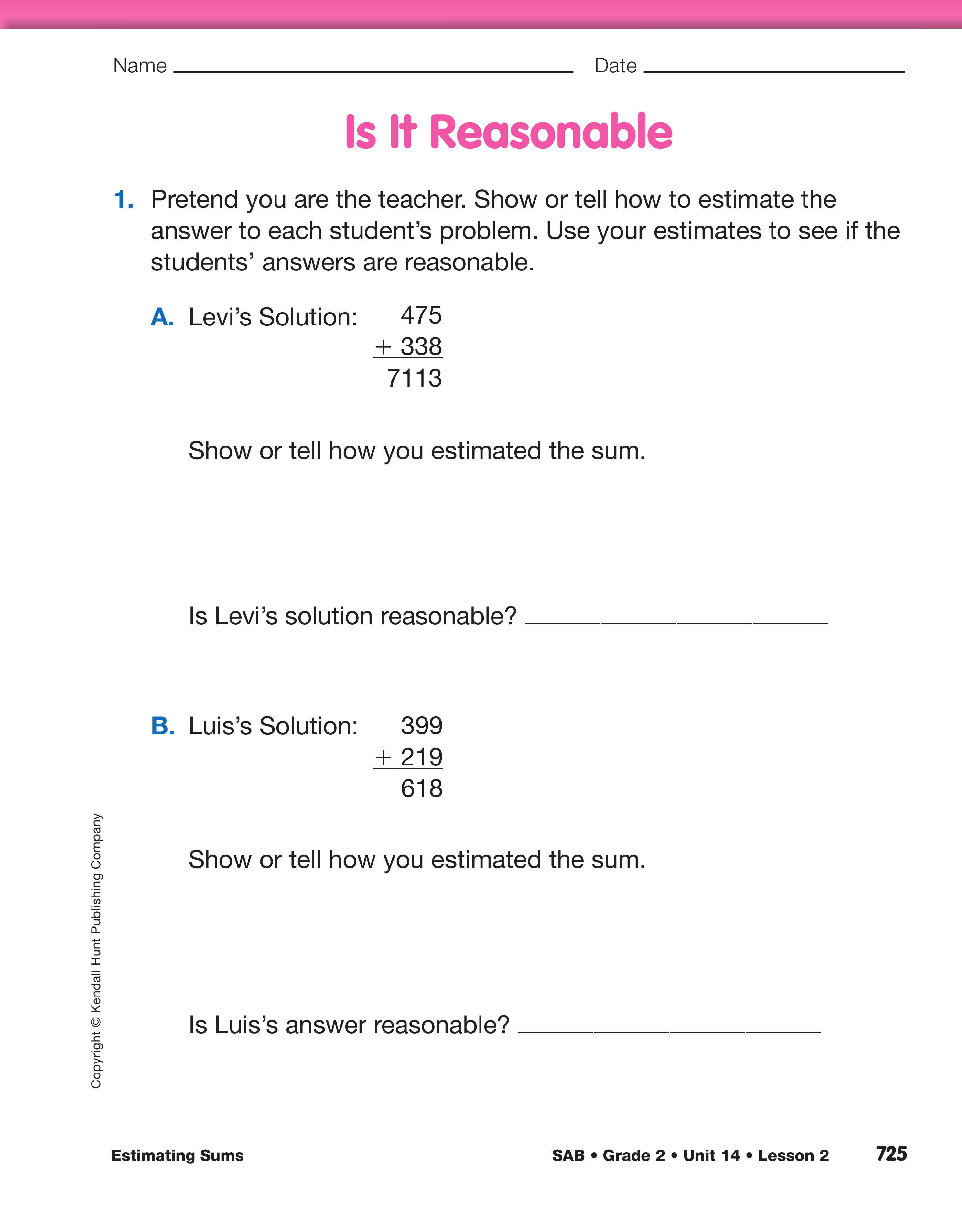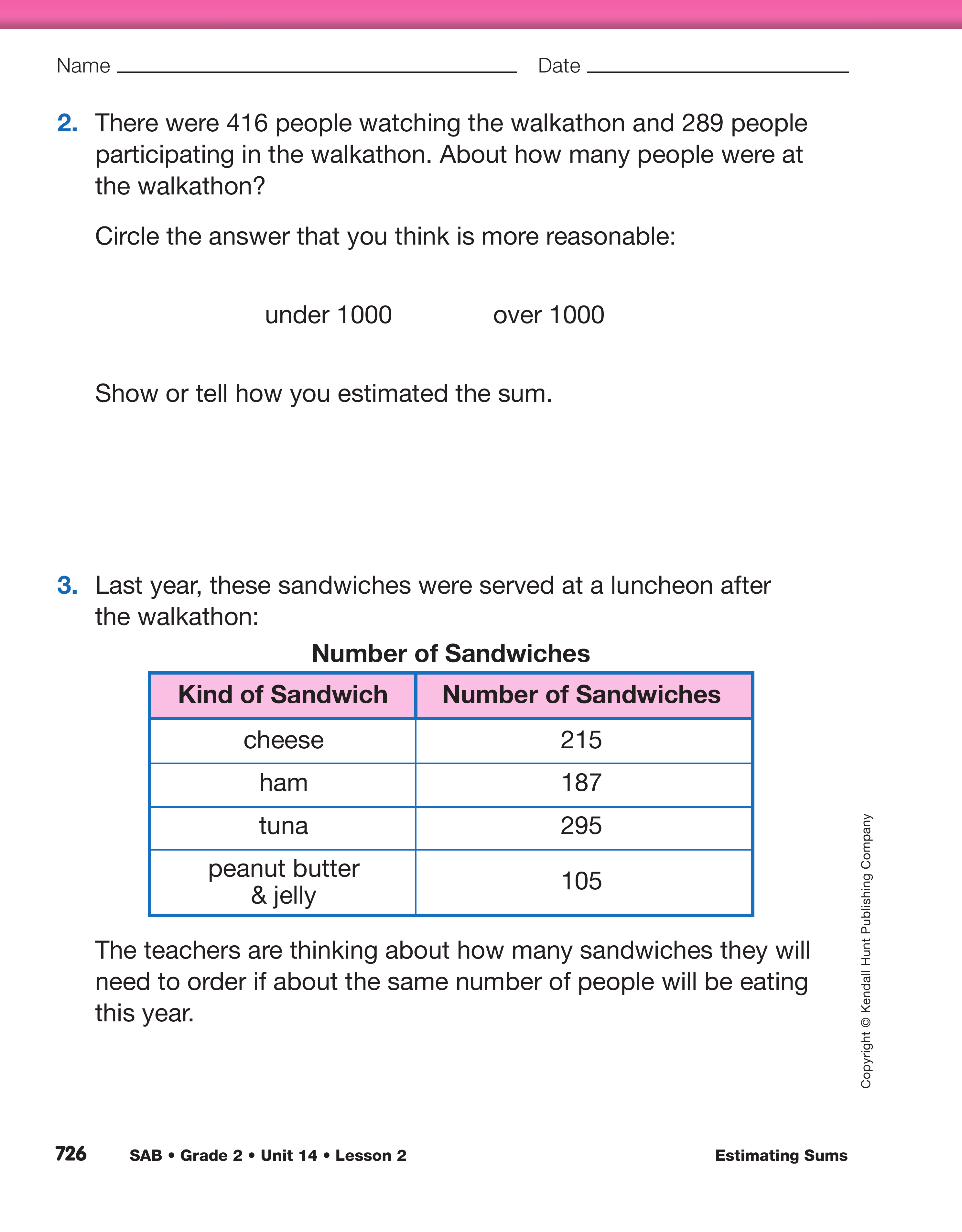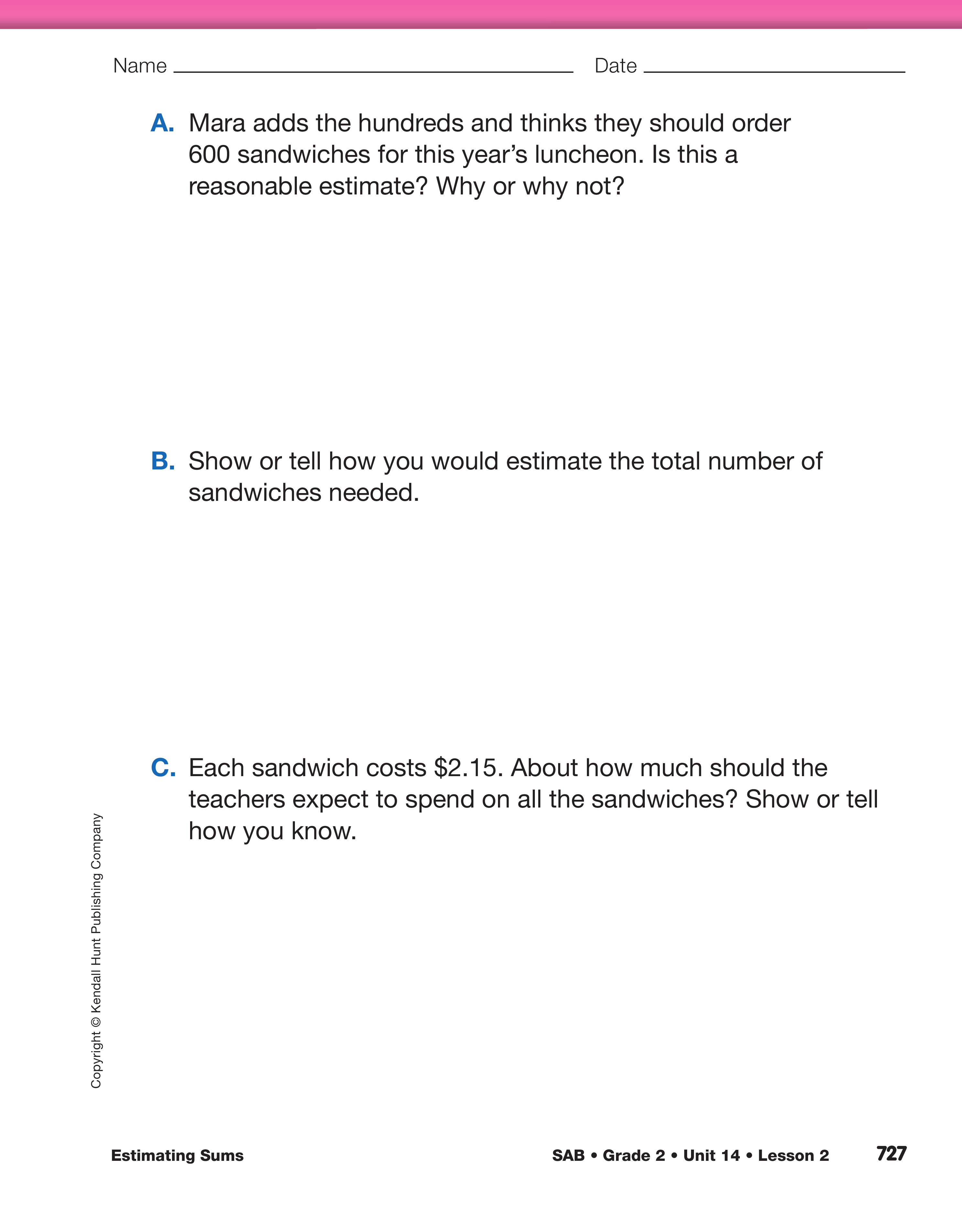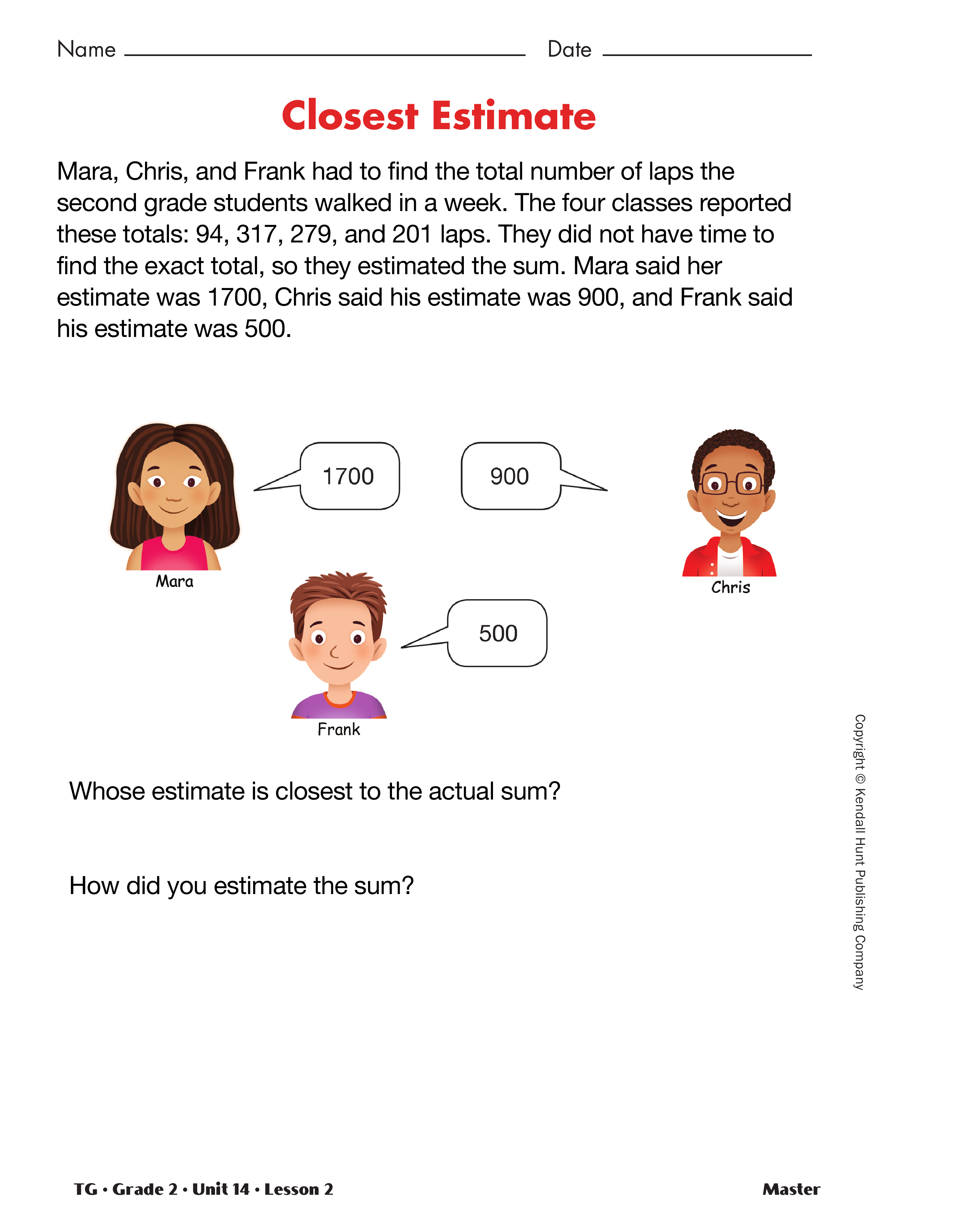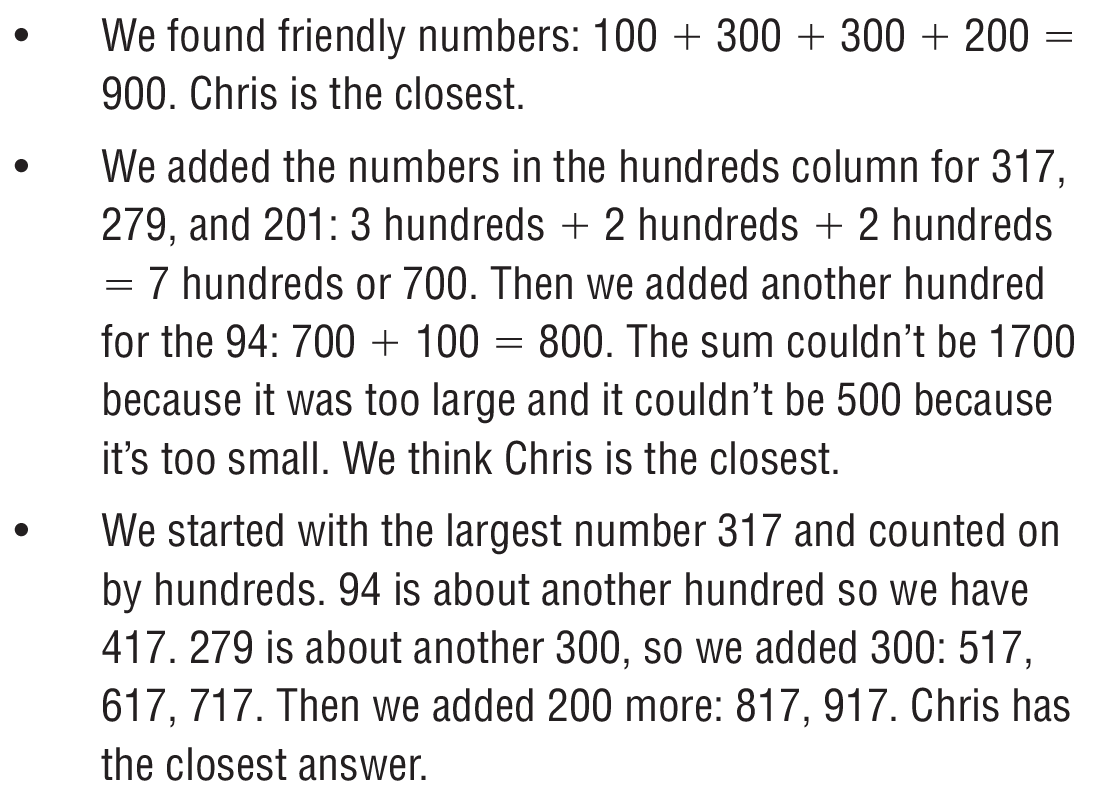Estimating Sums
Est. Class Sessions: 2Summarizing the Lesson
Display the Closest Estimate Master. Have students refer to the Estimation Strategies for Addition chart that they created earlier in the lesson to solve the problem presented on the Master:
Mara, Chris, and Frank had to find the total number of laps the second grade students walked in a week. The four classes reported these totals: 94, 317, 279, and 201 laps. They didn't have time to find the exact total, so they estimated the sum. Mara said her estimate was 1700, Chris said his estimate was 900, and Frank said his estimate was 500. Whose estimate is closest to the actual sum? How did you estimate the sum?
Have student pairs discuss who was correct and how to estimate the sum.
Monitor students as they work so you can select several to share their solutions with the class. See Figure 2 for possible responses.
Ask:
Assign the Is it Reasonable pages in the Student Activity Book to assess students' understanding of estimation.














